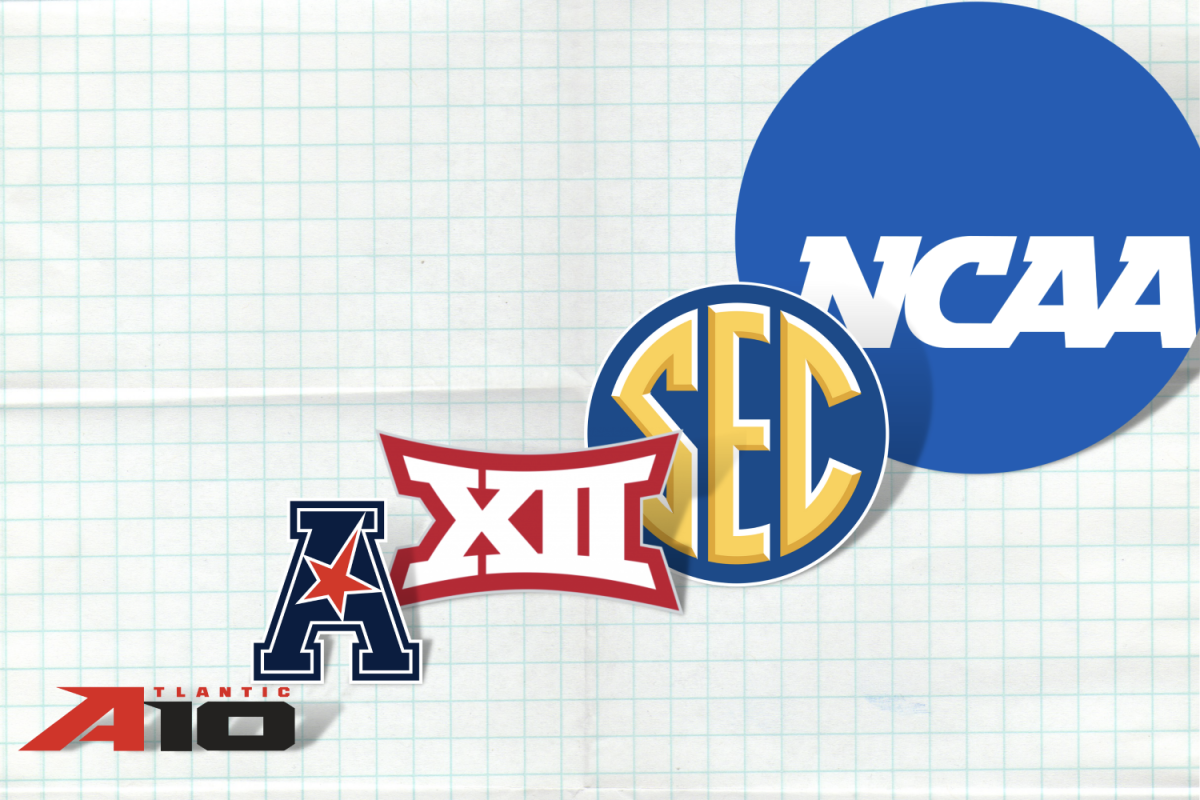When the news officially broke that the University of Texas and the University of Oklahoma would depart the Big 12 Conference for the Southeastern Conference (SEC), many could guess that this would set up a precarious position for one of the nation’s premiere basketball conferences.
Initial rumors suggested that the conference could additionally lose the University of Kansas to the Big Ten Conference and the University of West Virginia University to the Atlantic Coast Conference (ACC). However, Bob Bowlsby, the Big 12’s commissioner, implied that the conference would only gain schools, not lose any.
He resorted to doing some poaching of his own, as it was announced Sept. 10 that the University of Cincinnati, Brigham Young University, the University of Central Florida and the University of Houston would all be taking their high -pedigree programs to the Big 12.
Brigham Young departs from their status as an NCAA independent, which is a status the team has held since 2010. For them, this move is not that complex. However, the American Athletic Conference (AAC) has now lost three of its top-tier members. Cincinnati, Central Florida and Houston are possibly the top three programs for the conference in both basketball and football.
This leaves the league with teams that have been marred by mediocrity, with the exception of Temple University, the University of Memphis, basketball-only member Wichita State University and Southern Methodist University.
AAC Commissioner Mike Aresco was quick to give a sense of stability within a league that only began playing eight years ago. Aresco insisted that the league would begin a wide-ranging search.
From an Atlantic 10 Conference (A-10) perspective, A-10 schools likely will not be poached. The majority of these schools do not have football programs that could play at the level of AAC teams. Potentially, the University of Massachusetts could be approached, but they would need to be able to improve their football team quickly.
I would imagine the AAC is going to be looking at teams like Boise State University, the University of Alabama at Birmingham, Coastal Carolina University or Liberty University.
The AAC may try to recruit teams, but there is no guarantee they will be successful. This is where the A-10 needs to be opportunistic and go on the offense. Being proactive in adding schools is growing more important in this constantly evolving college sports landscape.
Temple has a storied history in the A-10, and they may be looking to get their teams out of the nose-diving AAC. They would have to find a new conference for football, but they would join one of the six premier basketball conferences in the country. However, a move to the A-10 for Temple would be challenging because of their lucrative television rights deals in football.
Wichita State seems like a perfect addition to the A-10. Geographically, this would only move the league a little more west as they already have Saint Louis University a couple hundred miles away. They have no football ties to the AAC, and their basketball program has accomplished much in its recent history. It would be a very straightforward move and appealing to both parties.
It will be a tough call though, as they have only been in the AAC for five years. Adding Wichita State or Temple would only continue the A-10’s recent climb to a nationally respected basketball conference.
Besides those two teams, Southern Methodist and Memphis would both be incredible additions; but it should be seen as incredibly far-fetched because of the size of their football programs and the sacrifices that would have to be made to join the A-10.
The emerging landscape of college sports requires conferences to be proactive about their future plans and expansion. Leagues that sit around and wait are going to get left in the dust. Anyone who thinks this will not have a continual trickle-down effect is not paying attention.
















































